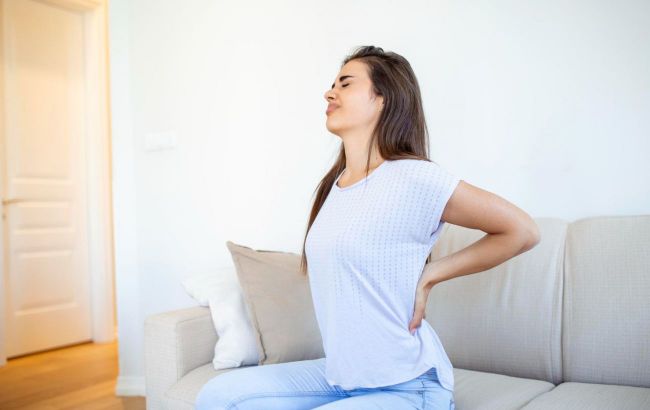Do them at home - 5 simple exercises to help you quickly improve your posture
 The exercises that will help improve posture (photo: Freepik)
The exercises that will help improve posture (photo: Freepik)
Poor posture is one of the most common problems. It makes a person less confident and can lead to chronic pain and even breathing problems. However, there are simple exercises that can help improve posture, states Eat This, Not That.
The key to correcting poor posture is to strengthen your back, shoulders, and abs. When these muscles are properly engaged, they help counteract the forward strain caused by modern lifestyles.
In addition, activating these muscle groups improves spinal alignment, making it easier to maintain proper posture throughout the day without constant effort.
Wall stand
This is one of the best exercises for correcting rounded shoulders and improving mobility in the upper back. This movement strengthens the postural muscles responsible for keeping the shoulders pulled back while reinforcing proper alignment.
If you find it difficult to hold onto a wall with your hands, it's a sign of tight chest muscles and weak upper back muscles that contribute to poor posture.
How to do it:
- Stand with your back to the wall and sit down
- Bend your elbows at a 90-degree angle, keeping your hands and elbows in contact
- Slowly raise your arms above your head, keeping contact with the wall as much as possible
- Return your arms to the starting position in a slow, controlled motion
- Perform 12 repetitions, focusing on smooth movement and maintaining alignment
.jpg)
Wall stand (photo: eatthis.com)
Reverse plank
The reverse plank helps strengthen the entire posterior chain, including the glutes, lower back, and shoulders. This exercise neutralizes the effects of prolonged sitting, which often leads to weakened muscles and a hunched posture.
Holding this position strengthens spinal alignment and promotes better abdominal engagement, which is crucial for maintaining good posture throughout the day.
How to do:
- Sit on the floor with your legs stretched out in front of you and your hands placed under you, fingers pointing forward
- Press down on your palms and lift your hips to form a straight line from head to heels
- Clench your gluteal muscles and engage your abs, keeping your chest open and shoulders back
- Hold this position for 30 seconds, then slowly lower yourself
.jpg)
Reverse plank (photo: eatthis.com)
Sitting chest rotation
Oberbal mobility is important for maintaining spinal health and preventing stiffness in the upper back. It helps to increase mobility in the mid-back by reducing tension, which promotes a rounded forward posture.
How to do:
- Sit on the floor or a chair with your back straight and feet flat on the ground.
- Put your hands behind your head with your elbows facing outward
- Turn your torso to the right as far as you can without straining, keeping your lower body still
- Return to the center and repeat on the left side
- Do 10 reps on each side, moving slowly and focusing on control

Sitting chest rotation (photo: eatthis.com).
Gluteal bridge
Weak gluteal muscles often cause poor posture, especially in men who spend many hours sitting. The gluteal bridge improves chest mobility by adding overhead.
This movement helps to strengthen the neutral position of the spine, making it easier to maintain an upright posture.
How to do:
- Lie on your back, bend your knees, put your feet on the floor, spread them hip-width apart
- Press on your heels and lift your hips, gripping the buttocks at the top
- After that, release the buttocks and lift again
- Perform 10 to 20 repetitions

Gluteal bridge (photo: Freepik)
Standing chin-ups
The standing chin-up is a simple but effective movement to improve neck alignment and counteract head forward posture.
Many people unconsciously push their heads forward when looking at a screen, which eventually leads to neck pain and poor posture. This exercise strengthens the deep neck flexion muscles and aligns the head with the spine.
To perform, follow these tips:
- Stand tall, relax your shoulders, and look straight ahead
- Slowly pull your chin up to your chest while looking forward
- Hold the position for 30 seconds, feeling a gentle stretch at the base of the skull
- Release and repeat as needed throughout the day

Standing forward chin-up (photo: eatthis.com)
This material is for informational purposes only and should not be used for medical diagnosis or self-treatment. Our goal is to provide readers with accurate information about symptoms, causes, and methods of detecting diseases. RBС-Ukraine is not responsible for any diagnoses that readers may make based on materials from the resource. We do not recommend self-treatment and advise consulting a doctor in case of any health concerns.

